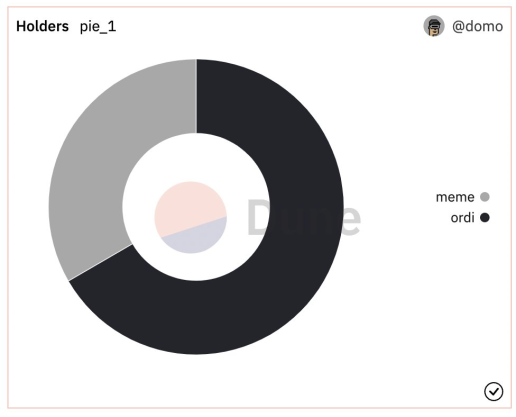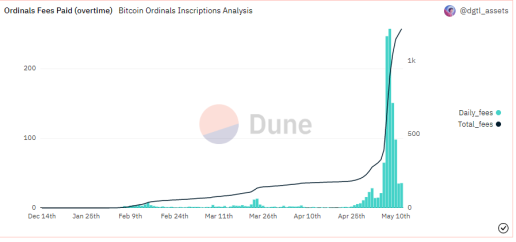A brand new Bitcoin token standard named the BRC-20 standard has entered the cryptosphere, gaining immediate notoriety. But you might be surprised to find out BRC-20 tokens are completely different from other token standards like ERC-20 or TRC-20.
In this Learn Center article, we’ll explain what the BRC-20 token standard is and how it could change the Bitcoin ecosystem.
What is BRC-20 and How Does it Affect Bitcoin?
BRC-20 tokens could, on one hand, be described as a new token standard on the Bitcoin blockchain.
On the other hand, one could also describe Bitcoin BRC-20 as a meme — and you wouldn’t be wrong to think so. But that’s certainly not all this new Bitcoin token standard is or what it could potentially become.
The BRC-20 token standard was created in March of 2023 by a pseudonymous on-chain analyst named Domo (“@domdata” on Twitter). Domo was playing with creating fungibility on Bitcoin using Ordinals inscriptions, a concept that then took off as the popularity of Bitcoin Ordinals grew. By early May 2023, what Domo initially emphasized was a "fun experiment" on Twitter ballooned to $991 million in market cap, effectively putting BRC-20 tokens on the map.
Similar to Ordinal Theory, BRC-20 also has a "first-in-first-out" model. This means that whoever is the first to deploy a token on BRC-20 becomes its rightful owner, which has naturally led to the rush of BRC-20 enthusiasts looking to mint their own tokens.
Some worry that BRC-20 tokens are bogging down the Bitcoin network, and that’s a valid concern since transaction volume on-chain has also gone parabolic. In fact, BRC-20 transactions in May accounted for more than 50% of on-chain transactions.
Ordi: The first BRC-20 token
Domo minted the first BRC-20 coin under the ticker ORDI back in March of 2023. At first, people were mildly interested in Ordi as an experiment on Bitcoin — but that's before memecoin season started (we'll have more on that).
On March 8, 2023, major crypto exchanges like Crypto.com and Gate.io listed Ordi as its surge in popularity. The price of Ordi has been extremely volatile, as most people expect with memecoins. Ordi’s all-time high was $28.52, according to CoinGecko, and its low was $7.41.
Types of BRC-20 transactions and wallet capabilities
There are three types of BRC-20 transactions:
- Deploy: The creation of the actual token with specific parameters
- Mint: The generation of a specific number of the token in question
- Transfer: Sending tokens from one wallet to another
In order to mint or transfer Bitcoin BRC-20 tokens, users will need a Bitcoin wallet. The most prominent wallet to emerge for BRC-20 is the UniSat Wallet, an open source Chrome extension for Bitcoin Ordinals and BRC-20.
Once a user has created a Unisat Wallet, it’s easy to use the Unisat web interface to mint tokens. Unisat also hosts a marketplace, similar to an NFT marketplace, that makes transferring BRC-20 tokens easy.
The long-term vision for BRC-20 on the Bitcoin blockchain
Like with the Ordinals protocol itself, BRC-20 has become contentious. Those who enjoy experimenting with new ideas, technology, and memes love the BRC-20 standard, but concerns about network bloat and increasing gas fees have also emerged as BRC-20 has become increasingly popular.
However, one of the advantages of BRC-20 is that the cost of minting is limited only to gas fees. There are no other fees for creating new BRC-20 tokens. If demand remains high, this is a good prospect for their value.
At the same time, it is understandable that many people are resistant to network bloat. One possibility for BRC-20 tokens is to move activity onto a layer-2. This would allow memecoin trading off-chain.
What are the differences between Ethereum’s ERC-20 and Bitcoin’s BRC-20?
But what exactly is a BRC-20 token and how does it differ from Ethereum’s token standard, ERC-20? The most obvious difference is in the underlying blockchain and, therefore, the consensus mechanism for each. The Bitcoin network is a proof-of-work (PoW) blockchain and Ethereum is a proof-of-stake (PoS) network.
Another distinction is that ERC-20 tokens use smart contracts and BRC-20 tokens use Ordinal inscriptions. Although BRC-20 tokens are essentially used as fungible tokens, that’s not literally true. BRC-20 tokens are more like NFTs minted on Bitcoin as Ordinals.
Think of BRC-20 tokens like a collection of millions of Bitcoin NFTs minted using Ordinal Theory. BRC-20 is JSON data inscribed using the Ordinals inscription method. The text has some simple variables and functions like a 4-character ticker. It also includes a max supply number, token limit per mint, and deploying, minting, and transferring functions.
BRC-20 Token Economics
Currently, there are more than 14,000 BRC-20 tokens in circulation. When you deploy a BRC-20 token, you can designate the ticker, supply limit, and token limit per mint. For example, Ordi tokens have a supply cap of 21 million and a token mint limit of 1,000. Domo said at the outset of the project that BRC-20 tokens are worthless and that people should not “waste money mass minting.”
That has not stopped speculators, however. In the weeks after Domo minted the first BRC-20 tokens, more coins have sprung up. Now, several memecoins are growing in popularity.
Memecoins on BRC-20
Some of the most notable meme coins on the BRC-20 standard are:
- PEPE
- ORDI
- MEME
- NALS
- OSHI
Pepe was the 4th BRC-20 deployed. It’s different from the popular PEPE ERC-20 token and was even deployed before Ethereum’s Pepe coin.
Someone deployed the Meme token right after Domo deployed Ordi and has since gained popularity. Domo tweeted about Meme, “An anon ape has already deployed a ‘brc-20’ with my logic; 'meme'. They must have seen my test deployment last night on the ordinals site and copied the format.”

Source: Domo via Twitter
Token standards on Bitcoin: Minting fees, transactions, and market value
As mentioned above, the frantic BRC-20 activity is driving up Bitcoin network fees. By May 12, 2023, daily Ordinals fees reached 35.7 BTC.
According to brc-20.io, daily transaction volume for BRC-20 on May 12 was $206,477,610. The price of Ordi was $15.60. Meme’s price reached $114.05, and the Oshi token reached $696.97. Total market cap for BRC-20 tokens hit $519,398,973.

Source: Dune
BRC-20 and the Future of the Bitcoin Blockchain
The BRC-20 standard, like many things in the crypto ecosystem, started as an experiment and quickly became a meme. But like many developments in the Bitcoin ecosystem, BRC-20 could become a crucial experimental token standard that ultimately expands what can be created and built on top of the Bitcoin network. If, like Ordinal Theory, BRC-20 tokens and the BRC-20 token market continue to grow in popularity, they can easily become a pillar of the ecosystem.
While bitcoins are capped at 21 million, minting BRC-20 tokens on the Bitcoin blockchain offers another way to immutably mint tokens on the most secure and decentralized blockchain. So while we may be in the middle of a memecoin frenzy, it is still important to keep an eye on the BRC-20 market and what become of BRC-20 tokens on Bitcoin.

